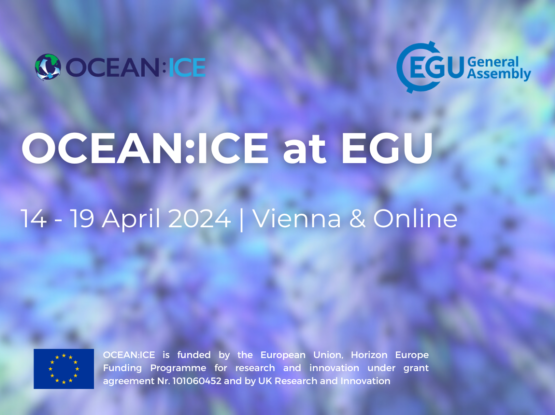OCEAN:ICE project member Violaine Coulon (ULB) will present the ongoing work package 4 work on constraining projections of future freshwater fluxes from Antarctica at the EGU General Assembly 2024.
In this poster presentation, she will present a dataset that offers projections of freshwater fluxes from the Antarctic ice sheet and uncertainty estimates spanning from the present-day to the year 2300 that can be implemented as a forcing for climate models that do not include interactive ice sheets. These projections are derived from an ensemble of historically calibrated standalone ice sheet model projections generated with the Kori-ULB ice flow model under different climate scenarios up to 2300. They are used to analyse spatiotemporal trends in calving rates, ice shelf basal melt and surface mass balance and assess the sensitivity and spread in freshwater fluxes projections in response to climate forcing and a comprehensive range of uncertain glaciological processes.
Come and have a chat at Vio’s poster on Monday 15 April 2024 between 10:45 and 12:30 CEST in Hall X5.
At the EGU General Assembly 2024 there will also be another OCEAN:ICE project member, Anna Olivé Abelló (Institut des Géosciences de l'Environnement), presenting the work package 2 work on ‘Revisiting the iceberg thickness distribution in Southern Ocean simulations’
In this poster presentation, Anna will present a study which aims to improve the thickness distribution of the calved icebergs based on ice shelf characteristics, decrease the computational cost of the model, and assess how these improvements alter the lifespan of the icebergs and their freshwater flux distribution across Antarctica. The new approach has been implemented in a 0.25° Southern Ocean configuration of the NEMO ocean–sea-ice model. The team used a power-law probability distribution function of iceberg occurrence as a function of iceberg area and a tabular iceberg definition to establish the thickness distribution for the small iceberg categories, imposing that each class exhibits the same total mass. In order to reduce computational costs, we constrained the frequency of icebergs released per class so that the smaller classes of multiple icebergs are gathered into one particle. Team’s preliminary results show that the iceberg thickness distribution, implemented as a function of areas, is supported by in-situ observations measured from high-resolution SAR-1 satellite images. The released icebergs display a typical thickness per class depending on the ice shelf's source, with a broader distribution when more calving classes are established. Ultimately, the findings reveal that accounting for realistic Antarctic ice-shelf thicknesses leads to thicker icebergs, particularly in larger classes, consequently increasing the mass that each transports westward around Antarctica. Future iceberg simulations, carried out for 25 years, will assess the iceberg's sensitivity to the maximum iceberg area, the number of different sizes and the area bounds used to define each size, among others. It is also expected that these simulations will also unveil high-melting regions and high iceberg densities in regions where icebergs ground, and will determine if fragmentation processes are needed to achieve realistic iceberg lifespans.
Come and have a chat at Anna’s poster on Tuesday 16 April 2024 between 16:15 and 18:00 CEST in Hall X4.
Besides Vio and Anna, many other OCEAN:ICE scientists will be present at the EGU General Assembly 2024. Will you be there too? Let us know!


